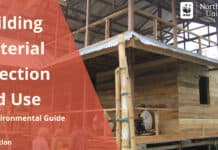By Kevin Taylor
The smooth and efficient flow of operations and processes at warehouses and distribution centers plays a critical role in retail and wholesale supply chains. Increasingly cell phones and cellular connectivity form an integral part of those operations. The use of digital tools like tablets and the development of SaaS and cloud-based applications allow distribution centers to operate more fluidly and facilitate remote access.

Without strong cellular connectivity inside and around your warehouse, inefficiency and even down time can quickly creep into your workflow. That’s a scenario you simply can’t risk when valuable product needs to be distributed on time and with accuracy. Unfortunately, the concrete, steel, and glass common in many warehouses wreaks havoc on cellular radio frequency waves. In some cases, building materials can reduce cellular signal to borderline unusable, even if it’s strong outside.
How Building Materials Affect Cellular Signal
Building materials like concrete, steel, and glass are often the primary culprit when buildings experience poor cellular signal. Unfortunately, these are also three of the most common building materials. Let’s take a closer look:
- Concrete. In warehouses, concrete is a common flooring material. It’s also used for structural walls and noise dampening. However, floors and walls constructed of thick concrete act as barriers to cellular signal.
- Steel. Commonly used to create warehouse superstructures, steel is also used to construct roofs and siding. Unfortunately, it’s difficult for a cellular signal to penetrate this strong material.
- Glass. LEED-certified and energy-efficient glass, while less common in warehouses, can significantly reduce the amount of cellular signals that can enter a building.
As interesting as that information is, I know what you’re asking: How do I fix it?
Fortunately, there’s a solution for warehouse managers who simply can’t risk weak signal or dropped calls in their warehouse: cell phone signal boosters, also known as passive distributed antenna systems (DAS). This cost- and time-effective technology provides strong, reliable cellular and data connectivity in even the most difficult locations.
Implementing Cell Phone Signal Boosters For Unrivaled Connectivity
Passive DAS are commonly referred to as cell phone signal boosters because they “boost” cellular signal up to 32x. The system captures the existing cellular signal with an antenna, amplifies that signal, and redistributes it in the immediate area.
 The technology is also “carrier agnostic.” Whether your customers and employees use major carriers like AT&T, T-Mobile, Verizon, and Sprint, or smaller regional carriers, they get the same amplified signal. The best part is: it’s relatively inexpensive. Costs range from about 30 cents to 70 cents per square foot, including hardware and installation.
The technology is also “carrier agnostic.” Whether your customers and employees use major carriers like AT&T, T-Mobile, Verizon, and Sprint, or smaller regional carriers, they get the same amplified signal. The best part is: it’s relatively inexpensive. Costs range from about 30 cents to 70 cents per square foot, including hardware and installation.
How Warehouses Deploy Cell Phone Signal Boosters
Don’t take my word for it. Look at how a century-old, $1 billion international food distribution company solved its cell phone signal problem.
The company’s Florida distribution center suffered from poor cellular connectivity. Staff located in the offices of the 345,000-square-foot facility had trouble making and receiving cell phone calls due to the type of building materials used in the distribution center.
The company called connectivity specialists Powerful Signal for a solution. After evaluating the building, Powerful Signal designed and implemented a 4G cell phone booster system to cover the main offices in the building. The system covered 22,400 square feet on two floors, and instantly improved the company’s cellular communications problems.
This distribution company quickly found that cell phone signal boosters provide a cost- and time-effective solution to cellular connectivity problems. Consider a cell phone signal booster if your warehouse or distribution center suffers from less than optimal cellular signal and you can’t risk downtime. Boosting your facility’s cellular signal will help increase efficiency and streamline workflows.
 Kevin Taylor is President of Powerful Signal, provider of cell signal solutions since 2007. Powerful Signal’s technical experts have over 50 years of combined experience in passive DAS system design, nationwide installation, multi-site rollout, and post-sales support.
Kevin Taylor is President of Powerful Signal, provider of cell signal solutions since 2007. Powerful Signal’s technical experts have over 50 years of combined experience in passive DAS system design, nationwide installation, multi-site rollout, and post-sales support.




















![[VIDEO] Collect Asset Data at the Speed of Walking a Building](https://facilityexecutive.com/wp-content/uploads/2024/02/maxresdefault-324x160.jpg)
It’s so frustrating to have a signal that doesn’t work. I’ve lived in a high-rise building and I feel like the building material and neighboring buildings really screwed up my signal. I ended up investing in a booster. It helped immensely.